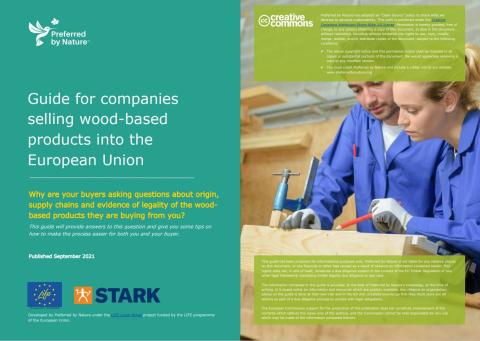Graphic industries embrace forest certification for comeback
Historically, the paper and print industry has been an important driver of forest certification worldwide. Now this role is set to grow even stronger. Forestry certification schemes play a major role in the strategy adopted by European graphic industries, for staying competitive on a tough market.
Financial crisis. Electronic media replacing paper-based communication. And growing imports of paper and print products from low-cost economies. These are the main reasons why the European paper and printing industries have been in a state of crisis and decline for the past 6-7 years.
But the graphic industry has pulled together and is responding to the challenge. And there is one word that resounds particularly strongly throughout the industry’s initiatives to secure a better market position: sustainability.
Great awareness of FSC
 “Sustainability is key to secure the competitiveness of the entire graphics industry”, says Håvard Grjotheim, President of the European confederation for printing and allied industries,Intergraf.
“Sustainability is key to secure the competitiveness of the entire graphics industry”, says Håvard Grjotheim, President of the European confederation for printing and allied industries,Intergraf.
Mr. Grjotheim interacts with numerous European paper and print sector associations and enterprises, and lobbies on behalf of the industry in Brussels. He strongly advocates responsible forestry labeling schemes as a sutainability tool for the graphic sector.
“The origin and traceability of paper are key environmental aspects in the graphic industry. I see FSC certification as one of the most important tools for enhancing our eco-credibility. One of the big advantages of FSC certification is that its value is fairly easy to communicate ”, he says. “By now, there is a great awareness of forestry certification schemes among the industry. Most serious printing industries in Europe are very aware of the FSC label”.
Paper sustainability campaign
The initiative TwoSides promotes the sustainability of print and paper. This campaign was launched by the UK National Association of Paper Merchants (NAPM) and has since become an EU-wide initiative involving companies in the entire graphic communications supply chain. TwoSides addresses perceptions such us “paper is bad for the environment” and “making paper destroys forests”, by providing facts that puts these issues into perspective. TwoSides embraces the FSC and PEFC schemes as tools used by the paper and print industry to support well-managed forests.
TwoSides addresses perceptions such us “paper is bad for the environment” and “making paper destroys forests”, by providing facts that puts these issues into perspective. TwoSides embraces the FSC and PEFC schemes as tools used by the paper and print industry to support well-managed forests.
Mr Grjotheim is also the Director of Norways’s largest printing group, the 07 group, which achieved FSC certification, issued by the Rainforest Alliance in September 2010. The process is an example of how the printing industry can drive certification down through the timber supply chain.
“Sustained demands from the 07 group resulted in the FSC certification of some of the biggest paper producers in Finland and Sweden. Three years ago, we had problems getting any FSC quality from our suppliers and it did not make sense for us to obtain FSC chain of custody certification until our suppliers had moved further, so we worked with them to make this happen. Today, our suppliers can provide a range of FSC qualities”.
Digital versus paper-based communication
The organisation PrintPower also defends the eco-credibility of paper. Among the arguments provided, the organisation highlights the fact that digital media also has a carbon footprint, which may in some cases exceed that of paper-based communication: “The notion that no energy is used in digital media (websites, online ads, e-letters) is false. Running the servers and infrastructure needed to support web-based information accounts for two per cent of Europe’s total energy consumption ”.
“The notion that no energy is used in digital media (websites, online ads, e-letters) is false. Running the servers and infrastructure needed to support web-based information accounts for two per cent of Europe’s total energy consumption ”.
Mr Grjotheim: “There are many myths and misconceptions about the environmental disadvantages of paper. Ironically, paper has got a bad reputation partly due to the industry’s efforts to recycle it! This is why many people nowadays see paper as a wasteful product. In the process of educating consumers to recycle, we forgot to tell them about the cleanliness and sustainability of paper”.



